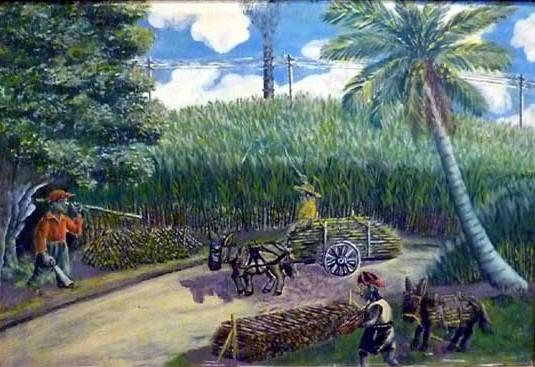Separating music by eras

Competition for size of patronage between the upcoming Footloose and Strictly 2K party series, both scheduled for Saturday, May 28, is particularly obvious. In several locations around Kingston the billboards are placed one above the other, with the predominantly blue and yellow themed Footloose seeming to take the top (literally) billing and the yellow and orange Strictly 2K below. I also saw the Footloose advertisements in the areas of the city I frequent first and, chronologically, the decades that it focuses on – the 1980s and 1990s – precede its competitor, whose time span is stated in its title.
There will be, I am sure, persons who attend both parties on that post-payday Saturday this month-end. Driving between Sabina Park, where Footloose will be held, and the Mas Camp on the National Stadium grounds which will host Strictly 2K, takes less than five minutes without heavy traffic. However, unless one or the other is closed down for some reason, cross-pollination is likely to be very low. This is not only due to the near simultaneous times they will hit their peaks (between 3:00 a.m. and 4:00 a.m. is customary), but the separation inherent in the eras which they focus on.
It is a reflection of the unfortunate chronological distinction which we tend to make in the progression of Jamaican popular music, which is great for focused branding such as the two currently competing parties (and this has happened before) but terrible for the sense of continuity which is critical to building an enduring product. It is young persons who drive popular culture, coming up with new styles and slangs in that flush of exuberance before the realization that life will end one day truly sets in. However, when we focus on Jamaica’s popular music by eras, we run the very real danger of disregarding, disrespecting, dismissing and discarding the excellence which has come before. So, we end up with trap dancehall with, typically, a very narrow range of topics relevant only to the self-engrossed world of materialism and paranoia specific to the world of its virtually birthed stars and wonder how it will play out.
The Footloose and Strictly 2K coincidence is not limited to the party scene. It is rife on radio, with specific retro and throwback themed shows and even days and it will play out on the festival stage at this year’s Reggae Sumfest, although a formal distinction is not being made. However, with Friday’s Main Festival Night 1 to feature Skeng, Chronic Law, Jashi, Marcy Chin and Rytical, along with the longer established Spice, Shenseea, Aidonia, Masicka and Govana, and a Madhouse music label tribute on Main Festival Night 2 featuring Beenie Man, Bounty Killer, Cham, Wayne Wonder, Frisco Kid, Mr. Easy and Spragga Benz, the time distinction is obvious. Dave Kelly’s Madhouse ruled the dancehall roost in the 1990s, and not even all of it, but from about 1993 to 1999 (if that late). It was phenomenal output, but a very limited time span. Many of the performers on the previous night were made online during the COVID-19 lockdown.
I was fortunate to grow up on radio and, later, sound systems where the borders between Jamaica’s music were more porous. So, on RJR I could hear The Skatalites and Yellowman, at a Metromedia dance I would hear Dennis Brown singing about the foundation some time before Shabba deejayed the glories of the needle eye. As a journalist, I was privileged to cover from Sting to Startime, Sumfest to Rebel Salute to sound system clashes, festival songs and gospel shows, folk song presentations to poetry and just about every pan knock and lizard croak into a microphone in between (including early stagings of 80s and 90s themed parties Footloose and Yesterday, as well as the forerunner, Good Times). The natural outcome was an appreciation of variety which I suspect is not the general situation. I do have my preferences, but not the often polarizing, personal opinions about what constitutes good Jamaican music. It must be noted that Rebel Salute is perhaps the only large-scale event to present a strong mix of eras on one stage on one night and Merritone is wonderful in its range of recorded music.
These entrenched positions prevent a higher level of successful cross-production between eras, like Damian Marley did with “Welcome to Jamrock” and Kartel delivered with “Benz Punaany” and Masicka encapsulated in the wonderful line “cause we bad like 90s dancehall” in “Hard Ball” about six years ago.
So, on Saturday 28 May, expect mainly persons in their late 30s and upwards to be at Footloose, the under 30s may ram Mas Camp. With young gal business continuing to control Jamaica, a gray (or well dyed) head man or two is sure to be at both, but the age distinction between audiences will come into play.
Still, I so hope that I am wrong.
Mel Cooke covered Jamaican entertainment as a print journalist for almost two decades, overlapping with his MPhil research on dancehall and experiential marketing with the Institute of Caribbean Studies, UWI, Mona, where he is now working on a PhD while lecturing in the Bachelor of Arts, Communication Arts and Technology (BACAT) programme at the University of Technology, Jamaica (UTech, Ja.).






